#himba people
Explore tagged Tumblr posts
Text
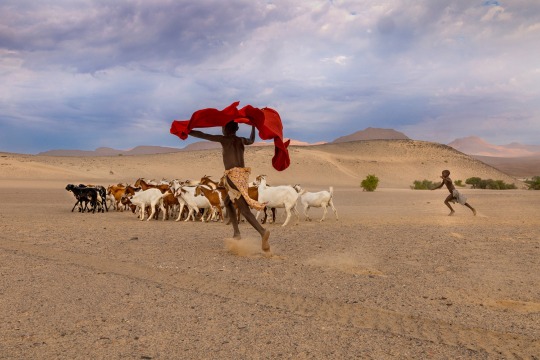
Steve McCurry (American, b. 1950)
Himba Shepherds Take Their Goats to Graze, 2023
172 notes
·
View notes
Photo
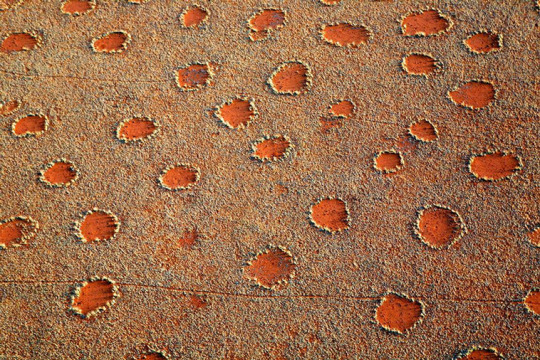
Namibia’s Fairy Circles, Namibia
Originally thought by the Himba people to be caused by the Gods, in modern times the sand termite and competition between plant species have also been blamed.
59 notes
·
View notes
Text

#namibia#himba#spitzkoppe#indigenous#tribe#song#indigenous people#himba tribe#dance#namibian#tribal#tribal dance#nomadic#nomadic people#culture#deaddress#desert#travels#desert people#editorial#split tone#africa#african#african people#tribal people#namibian people#travel blog#clap#editorial photography#landscape
37 notes
·
View notes
Text

Community - Kaokoland, 2022
#picoftheday#travel#namibia#africa#original photographers#photographers on tumblr#street photography#himba#people#trees#country life#photooftheday
7 notes
·
View notes
Text

Hello!, welcome… why don't you take a seat?… Get comfortable, relax, take a second if you need to… Now, what's bothering you? Well, why don't we start at the beginning Growing up how was your relationship with the fundamentals of conscious existence?
Did you have xenon orchid sinews spilling down the outer center of your Blooming Escher/Mandelbrot head?? And how about claustrophilic tendrils clapping caskets closed on seven-knuckle thumbs Did you get along well with the Gideon Bugler pineal glands?? Your projector eyes casting sci-fi's on your STR'd strands?? Tell me about your nerve to steal nerves of steel from under Bacchus' bloody nose Did Namibian Himbas tie-dye you, your ears pierced with a Phineas Gage flagpole Did you die before your day?… Thursday traction, Tuesday titration… My hope is to assess through my objective report of Your subjective conjecture Whether this proprietary bled of expertise and seasoning works as well as this Transorbital ice pick!!! Holistic ballistics, you got a better idea? It's about the best we could come up with!!, what?!, you think ideas spread BECAUSE THEY ARE GOOD?! NO!!!! they spread because people LIKE them!!! So now here we are once again, YEAH YEAH YEAH YEAH, holding!!!! As it were!!, a mirror!!! up to your!!! MIRROR!!! …AAAAAAAAAAAAAAAAAAAAAAAAAAAAAAAAAAAAAAAAAAAAAAAAAAAAAAAAAAAAAAAAAAA!!!!!!!!!!!!!!!!!!!!!!!!!!!!!!!!!!!!!!!!!!!!!!!!!!!!!!!!!!!!!!!!!!!!!!!!!!!!!!!!!!!!!!!!!!!!!!!!!!!… I guess it's just something people do
366 notes
·
View notes
Text
Really felt it when the singing man said:
"Hello, welcome, why don't you take a seat? Get comfortable, relax, take a second if you need to. Now what's bothering you? Well, why don't we start at the beginning. Growing up, how was your relationship with the fundamentals of conscious existence? Did you have xenon orchid sinews spilling down the outer center of your blooming Escher/Mandelbrot head? And how about claustrophilic tendrils clapping caskets closed on seven-knuckle thumbs, did you get along well with the Gideon Bugler pineal glands? Your projector eyes casting sci-fi's on your STR'd strands? Tell me about your nerve to steal nerves of steel from under Bacchus' bloody nose. Did Namibian Himbas tie-dye you, your ears pierced with a Phineas Gage flagpole, did you die before your day? Thursday traction, Tuesday titration, my hope is to assess through my objective report of your subjective conjecture. Whether this proprietary bled of expertise and seasoning works as well as this transorbital ice pick. Holistic ballistics, you got a better idea? It's about the best we could come up with, what, you think ideas spread because they're good? No, they spread because people like them. So now here we are once again, holding as it were, a mirror up to your mirror. I guess it's just something people do"
464 notes
·
View notes
Note
44, 44, and… 44?
(I like facts)
44. RANDOM FACT ×3 COMBO
The rarest human hair/eye colour combination is Red Hair/Blue Eyes, because genes for both are recessive. The odds of a person posessing these genes presenting both at once is approximately 0.17%.
There are snakelike reptiles called Legless Lizards who lost their legs in a separate evolutionary path from snakes. While they look remarkably similar, one notable difference is that legless lizards have eyelids, while snakes do not.
The language spoken by the Himba peoples of Namibia has multiple words to describe various shades of green, but no word differentiating blue. As a result, the Himbas have difficulty differentiating between colours English speakers perceive to be completely distinct.
634 notes
·
View notes
Text
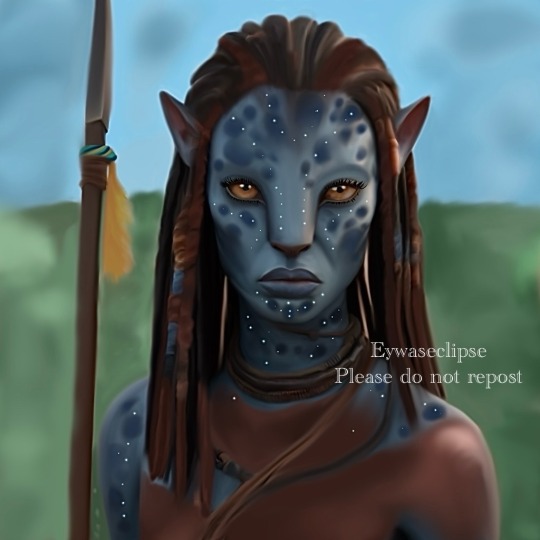
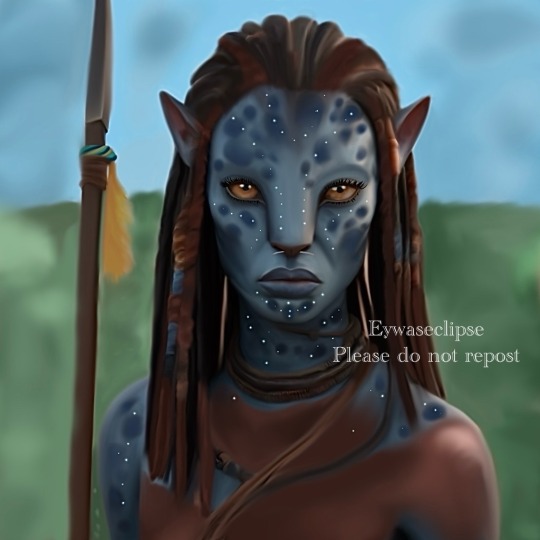
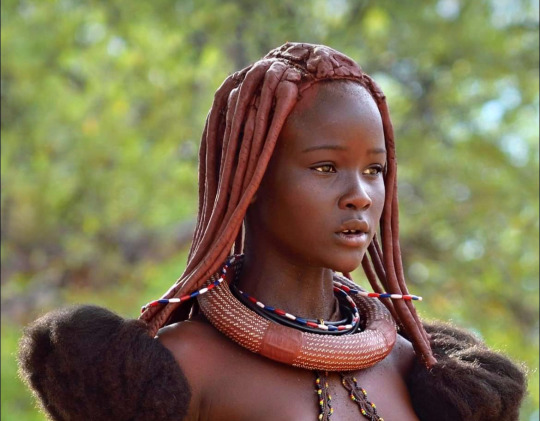
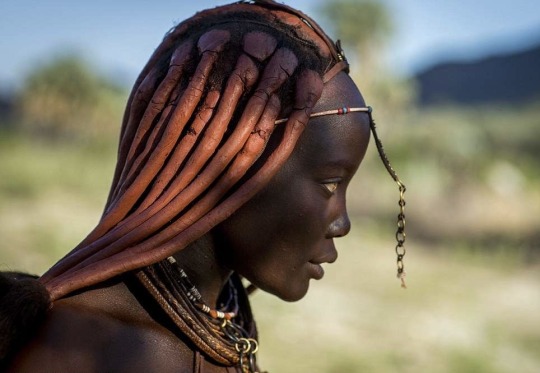
My beautiful Savannah Na’vi inspired by the Himba (OvaHimba) tribe of Northern Namibia. I traded the stripes for a more cheetah like pattern.
Himba people, especially women, are famous for covering themselves with otjize paste, a cosmetic mixture of butterfat and ochre pigment. It helps to cleanse the skin and protect it from the hot and dry climate! The style of hair depicts womanhood. Often times the plaits of braids covering face in a veil like fashion will indicate a pubescent status, whereas women who wear an Erembe style show they’re no longer children
#mine#avatar edits#avatar explore page#avatar for you#new avatar blog#avatar fics#avatar 2009#avatar the way of water#new avatar writer#new writer#my art#avatar art#avatar oc#na’vi art#na’vi oc#avatar blog#avatar fyp#Savannah na’vi#Himba tribe#avatar artists#artists of tumblr#art#avatar community#avatar world building#avatar world#atwow#my edits
180 notes
·
View notes
Note
Hi Jesus 👋
Hello, welcome, why don't you take a seat? Get comfortable, relax, take a second if you need to Now what's bothering you? Well, why don't we start at the beginning Growing up, how was your relationship with the fundamentals of conscious existence? Did you have xenon orchid sinews spilling down the outer center of your Blooming Escher/Mandelbrot head? And how about claustrophilic tendrils clapping caskets closed on seven-knuckle thumbs Did you get along well with the Gideon Bugler pineal glands? Your projector eyes casting sci-fi's on your STR'd strands? Tell me about your nerve to steal nerves of steel from under Bacchus' bloody nose Did Namibian Himbas tie-dye you, your ears pierced with a Phineas Gage flagpole Did you die before your day? Thursday traction, Tuesday titration My hope is to assess through my objective report of Your subjective conjecture Whether this proprietary bled of expertise and seasoning works as well as this Transorbital ice pick Holistic ballistics, you got a better idea? It's about the best we could come up with, what, you think ideas spread because they're good? No, they spread because people like them So now here we are once again, holding As it were, a mirror up to your mirror I guess it's just something people do
79 notes
·
View notes
Text

Diverse African Cultures and Beliefs about Life After Death
Introduction
Africa is a continent rich in cultural diversity and traditions, and this extends to its beliefs about life after death. Across the vast expanse of Africa, there are numerous cultures, each with its own unique perspective on what happens when life on Earth comes to an end. In this article, we will explore some of the fascinating beliefs about life after death that are deeply ingrained in African societies.
1. The Ancestor Veneration of the Akan People (Ghana and Ivory Coast)
In Akan culture, which encompasses the Ashanti, Fante, and Akuapem people, ancestors hold a significant place in the spiritual realm. They believe that after death, the souls of the departed continue to exist and influence the lives of their living descendants. Ancestor veneration involves rituals, offerings, and prayers to keep these spirits content and receive guidance and protection from them.
2. The Reincarnation Belief of the Yoruba People (Nigeria, Benin, and Togo)
The Yoruba people have a belief in reincarnation, where it is thought that the soul of a deceased person is reborn into a new body. The deceased's name may even be given to the newborn as a way of connecting the past and present lives. The Yoruba also believe that the deceased can communicate with the living in dreams and visions.
3. The Eternal Journey in Ancient Egyptian Culture (Egypt)
Ancient Egypt is renowned for its elaborate beliefs about the afterlife. Egyptians believed in a complex journey after death, where the soul faced trials and judgment before reaching the eternal paradise known as the "Field of Reeds." To ensure a successful afterlife, elaborate burial rituals and tombs were constructed, including the famous pyramids.
4. The Importance of Ancestral Connection in Zulu Beliefs (South Africa)
Among the Zulu people, the connection to ancestors is deeply cherished. It is believed that after death, the ancestors continue to play a role in the lives of their descendants. Rituals such as sacrifices and ceremonies are performed to honor and seek guidance from these ancestral spirits. Displeasing the ancestors can bring misfortune, while pleasing them can bring blessings.
5. The Dualistic Beliefs of the Dogon People (Mali)
The Dogon people have a dualistic belief system. They believe that after death, one's soul splits into two parts: one part goes to the ancestral realm, while the other is reincarnated into a new being. This complex system reflects the Dogon's spiritual connection to both their ancestors and the cycle of life.
6. The Spiritual Transition in the Akan-Bono Culture (Ghana)
The Akan-Bono people have a unique belief in the transitional phase after death. It is believed that after a person dies, their soul goes through a period of adjustment before joining the ancestors in the spiritual realm. During this time, the soul is thought to revisit important places and people from their earthly life.:
7. The Burial Rituals of the Senufo People (Ivory Coast, Mali, and Burkina Faso)
Among the Senufo people, the transition from life to the afterlife is marked by elaborate burial rituals. They believe that after death, the deceased's spirit lingers in the vicinity of their burial site. Special ceremonies and sacrifices are conducted to ensure a peaceful journey for the departed and to maintain a connection between the living and the deceased.
8. The Concept of the "Underworld" in San/Bushmen Beliefs (Southern Africa)
The San people, also known as Bushmen, have a belief in an underworld inhabited by spirits. After death, the souls of the departed are thought to travel to this underworld, which is considered a realm of ancestral spirits. The San people often use trance dance rituals to communicate with these spirits and seek guidance.
9. The Immortality Belief of the Himba People (Namibia)
The Himba people hold a belief that the spirits of their ancestors are immortal and continue to watch over the living. They also believe in reincarnation, where the spirit of a deceased person can be reborn into a new child within the same family. This belief reinforces the strong bond between generations.
10. The Role of Dreams in Khoikhoi Beliefs (South Africa)
The Khoikhoi people place great importance on dreams as a means of communication with the deceased. It is believed that dreams can provide insights, warnings, or messages from the spirit world. Special rituals are performed to interpret dreams and receive guidance from ancestors.
11. The Journey to the "Land of the Dead" in Dinka Culture (South Sudan)
Among the Dinka people, the journey to the afterlife is seen as a migration to the "Land of the Dead." They believe that the deceased will join their ancestors in this realm, where they can continue their pastoral lifestyle. Special rites and ceremonies are conducted to facilitate this transition.
12. The Symbolism of the Baobab Tree in Many African Beliefs
Across various African cultures, the mighty baobab tree is often associated with the afterlife. It is believed that these ancient trees serve as a link between the earthly realm and the world of spirits. Many cultures bury their deceased near baobab trees, believing that the tree's roots connect with the spirits below.
Conclusion
The intricate beliefs about life after death in Africa reflect the continent's cultural richness and diversity. From ancestor veneration to reincarnation, from underworld journeys to dream communication, these beliefs offer a glimpse into the deep spiritual connections that African societies maintain with their departed loved ones. Each culture's unique perspective contributes to the fascinating mosaic of African spirituality and traditions.
#life#animals#culture#aesthetic#black history#history#blm blacklivesmatter#anime and manga#architecture#black community
201 notes
·
View notes
Text
I’m guessing most people aren’t aware of many African ethnic groups, however it’s kinda extremely surprising to me that I’ve never seen a Knuckles the Echidna humanization that made him a member of the Himba people of Namibia, who are most well known for dying their braids and skin with an ochre-pigmented red paste called ojitze, which makes said braids look surprisingly similar to Knuckles’ spikes.




I know that traditionally only the women use ojitze, but I still think it would work incredibly well for a human Knuckles, and I’d adore to see an artist make an Omuhimba interpretation of him
60 notes
·
View notes
Note
h
ello, welcome, why don't you take a seat? Get comfortable, relax, take a second if you need to
Now what's bothering you? Well, why don't we start at the beginning Growing up, how was your relationship with the fundamentals of conscious existence? Did you have xenon orchid sinews spilling down the outer center of your Blooming Escher/Mandelbrot head?
And how about claustrophilic tendrils clapping caskets closed on seven-knuckle thumbs Did you get along well with the Gideon Bugler pineal glands? Your projector eyes casting sci-fi's on your STR'd strands? Tell me about your nerve to steal nerves of steel from under Bacchus' bloody nose
Did Namibian Himbas tie-dye you, your ears pierced with a Phineas Gage flagpole. Did you die before your day? Thursday traction, Tuesday titration.
My hope is to assess through my objective report of Your subjective conjecture Whether this proprietary bled of expertise and seasoning works as well as this Transorbital ice pick. Holistic ballistics, you got a better idea?
It's about the best we could come up with, what, you think ideas spread because they're good?
No, they spread because people like them
So now here we are once again
holding
As it were
a mirror
up to your
mirror
I guess it's just something people do
18 notes
·
View notes
Text

#namibia#himba#spitzkoppe#indigenous#tribe#indigenous people#himba tribe#clap#dance#namibian#tribal dance#nomadic#nomadic people#culture#song#headdress#desert#africa#travels#editorial#african#african people#african tribe#tribal#tribal people#portrait#editorial photography#travel blog
65 notes
·
View notes
Text
2024 Book Review #53 – Binti by Nnedi Okarafor

This is one of those works that has been vaguely on my radar for years and years now – I have entirely lost track of the number of places I’ve seen it recommended as some of the best or most original science fiction of the 2010s. So when my hold finally came in on it, I went in more or less blind – which was, frankly, a fatal mistake. I bounced harder off of this than I have very nearly anything I can remember – if it was any longer I probably wouldn’t have bothered finishing the story. I got the whole trilogy as a compendium, and I’m certainly not going to force myself through the rest of it. Which is a shame, because there are plenty of original ideas in there, but (to me, at least) it’s an absolutely brutal failure of form and execution.
The story follows the eponymous Binti, a prodigy and savant in mathematics and the quasi-magical ‘harmonizing’ – creation and manipulation of electric currents. At age 16, she received accepted into the planet-spanning Oomza University and, despite the clear disapproval of her family and her people’s traditional isolationism, she runs away from home and aboard an interstellar transport to take her away. But when the ship is attacked by the Medusae – an alien species with a grudge against the university – a personal keepsake that turns out to be a powerful ancient relic allow her to survive when every other passenger is slaughtered where they stand – and eventually even communicate with the aliens who have seized the ship. She learns that they attacked as part of a plan to steal back their leader’s stinger, and convinces them to let her be their ambassador and attempt to get it through negotiation with the university administration instead. After she proves her willingness to argue on their behalf, they agree – and once they arrive at the university, the administration does as well. Both she and the young Medusae she forged something of a friendship with are welcomed as students, and she has to reckon with the dramatic changes being tested and healed by the medusae caused in her. Fin.
That is much more of a plot summary than I usually write for these things, but I guess my first big issue with the story is just that that’s basically everything that happens in the book? This feels like it could be quite easily cut down to a tight, compelling short story – or else expanded into a full novel, with enough space to give things time to breathe and allow for foreshadowing with more subtlety than a sledgehammer to the face. As is, the story feels both kind of meandering and like the plot beats are a first draft that never had the space to go back and add any real interest or surprise to them.
Which would honestly have been far more forgivable if not for the prose. This is shelved as young adult but in terms of sentence complexity and the way things are phrased it honestly feels closer to middle grade? Or, at least, every sentence was very simple and very explicit and direct, in a way that I quickly found clunky and then intensely grating to read. A friend described it as reading like it was translated from a different language, which doesn’t seem to be the case but I honestly wouldn’t be at all surprised.
Everything is also just thematically very convenient, I guess? Not even that the random relic Binti found in the sand as a child and keeps as a good luck charm turns out to be a hyper-advanced technological plot device, but that for unclear reasons the otjize dye that she (and the very real Namibian Himba ethnic group she’s a member of) use to plait and colour hair is to the Medusae a miraculous panacea which heals scars none of their own technology (capable of creating interspecies hybrids and inducing mutations with a single injection) could touch. Which is a level of thematic bluntness that’s just much more fitting for a children’s story than what I went into this expecting or hoping for.
I could go on, but there’s not really any point – to be positive, the worldbuilding hinted at is intriguing and evocative like absolutely everyone says it is. The whole reading experience was just a terrible failure of marketing, I think – I can’t recall the last time I read a book I ostensibly should have liked that is quite so forcefully Not For Me. Which is odd, because I actually quite enjoyed the other novella of Okorafor I read. But then, Remote Control was written six years later and for an adult audience.
27 notes
·
View notes
Text






Repost from @amplifyafrica
•
📚Let’s take a journey through the evolution of braids, exploring how this timeless art form has grown and transformed over millennia.
🇳🇦3500 BC: The Himba People of Namibia- For the Himba, braids were, and still are, a vital part of their culture. Each braid served as a social emblem, communicating everything from age and status to tribe and wealth. The tradition has been passed down through generations, remaining an integral part of the Himba identity.
🇳🇬x🇲🇱x🇬🇳x🇸🇳x🇳🇪500 AD: The Fulani People of West Africa-The Fulani people, spread across West Africa, are known for their intricate and distinct braid patterns. Traditionally, Fulani women would braid their hair with a central part, creating symmetrical patterns often embellished with beads, shells, and silver jewelry.
🌍 15th Century: The Transatlantic Slave Trade - As African people were forcibly taken to the Americas during the transatlantic slave trade, they carried their cultural practices, including braiding, with them. Some braids were even used as a means of escape—patterns like cornrows were mapped out to resemble paths to freedom.
✊🏽20th Century: The Black Power Movement-Braids made a powerful resurgence in the 1960s and 1970s during the Black Power Movement. Icons like Nina Simone, Angela Davis, and Cicely Tyson wore braids as a statement of pride in their African heritage. The style became a symbol of resistance against European beauty standards, reclaiming and celebrating black identity and culture.
📌21st Century: A Global Phenomenon
Today, braids have transcended their cultural origins, becoming a global phenomenon. From runways to red carpets, braids are celebrated worldwide for their beauty, versatility, and cultural significance. However, it’s essential to acknowledge and respect their deep-rooted history. Braids are not just a fashion statement—they are a connection to a lineage that spans continents and centuries.
#Braids #AfricanCulture #HairHistory #BlackExcellence #CulturalHeritage #BeautyWithMeaning #NaturalHairCommunity
48 notes
·
View notes